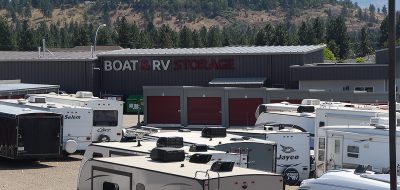Operation manuals are a great help in getting the most out of a product. By studying these one can learn how to properly use the product without exceeding its specifications and causing damage. However, there are things that are not necessarily covered and are either common sense, assumed knowledge or just plain missed.
So, let’s look at a modern class A diesel pusher. It has air suspension and air brakes. In most cases the manuals do not state the following.
Air Brakes: Do not exert hard pressure on the brake pedal while the park brake is applied. Doing so may multiply the power of both the park brake spring and the air brake chamber which could cause damage to the mechanical portion of the “S” cam assembly. Light to moderate pressure only is required while disengaging the park brake.
Airing Up: This is when you air up to ride height from a height lower than that used for travel. Do not drive the vehicle until the suspension is fully inflated and at ride height. This can generally be confirmed by in-dash indicators, if so equipped, or the sound of the compressor unloading. This requirement is to avoid two possible issues. The first is the possibility of contacting the fender with the front tires if steered to either side. The second issue is the acute angle that the drive shaft U joints are at when aired down. High torque at this steep angle may cause premature U joint failure. Moving a short distance relatively straight under very low power however, is acceptable.
Engine Shutdown: When running a diesel engine hard, shutting down after a short cooling time is generally known and stated in many manuals. However, many times, the cooling sequence is done at an engine speed above that of a normal idle speed. This is generally done using the cruise control idle feature. Do not shutdown at this setting. It is easy to forget you are at the higher idle setting. Reduce the engine speed to normal idle prior to stopping. Failure to do this may cause premature turbo charger bearing failure. This is caused by the turbo turbine continuing to spin briefly after the engine and oil pressure have stopped. The turbo turbine shaft actually rides on a film of oil. This is due to the extreme RPM that they spin at, usually topping 120,000 RPM or higher.
Checking The Transmission Oil Level: As most are aware, checking the transmission oil level on most modern 3000 or 4000 series Allisons can be done electronically at the keypad. It does not state in most cases that this is the preferred method and is far more accurate than using the dip stick. So why then is there a dip stick? It is a method to determine that there is sufficient oil to operate from cold. The electronic testing feature requires the transmission to be at 140 degrees F. minimum. This is best accomplished after driving some distance. Merely park on a level surface in neutral, allow a two minute idle time, and then depress both the up shift arrow and the downshift arrow simultaneously. (Providing the vehicle is equipped with this feature)
DP Fueling: Most, if not all, diesel pushers are equipped with duel fuel inputs, one on each side. These both lead to one common fuel tank. This arrangement is for the convenience of the coach operator allowing either side to be positioned at the pump. Truck fuel lanes typically have dual fuel hoses, one at each side. They are for filling truck tractor saddle tanks, not the configuration found on a diesel pusher. Do not attempt fuelling both sides at the same time. Additionally, do not pump fuel into one side with the other not capped. A fuel spill will result.
Tire Pressure: Within the coach, usually on a label pasted on the inside of a cupboard, the tire pressure for the vehicle may be found. The manual states that the tires should be maintained at the required pressure. No where, however, does it say that all the tires will leak at a slow rate and will require a top up every once and a while. This is because the oxygen, which in part makes up the air in the tire, passes slowly through the tire casing reducing the pressure over time. Oxygen monocles are small enough to do this on an ongoing basis. This information would be good to know for those that were not aware of this phenomenon.
Auto Start Genset: Very little information appears about this option. First, if enabled, it starts automatically when the house voltage reaches a low level. While 12.3 VDC is about 50% charge, that value is based on a rested state. But, considering the coach is operating with a normal load, 11.5 to 11.7 volt setting is about equal to the 12.3 resting state level. The manual does not mention this. Secondly, those units wired also to respond to thermostate temperature A/C operation, little or no help is available in the manual. Arming this feature will automatically start the genset when A/C is called for and automatically shut it down when the set temperature is made. This is a great feature for dry camping in hot weather. The bedroom air can be programmed to keep you cool all night without running the generator continuously. A great feature with so little direction.
Well, I’m sure there are more items that either are not covered or not specifically addressed in an understandable manner. Of course, many RV owners never read half the manual anyway, and particularly what may seem to be a simple topic.
So, what’s your take?
Just Reading Between The Lines – Lug_Nut – Peter Mercer






Pingback: accutane
Pingback: cialis online
Pingback: cheap viagra
Pingback: viagra
Pingback: cialis
Pingback: viagra
Pingback: Autoapprove List
Pingback: read this
Pingback: Glint
Pingback: Snap
Pingback: Snap
Pingback: I've said that least 884616 times
Phil Schoner
It happened again today, after a 2 week park. This time I felt 2 distinct sudden releases of the brake, one from each side. Is this consistent with the S cam theory?
Phil Schoner
Lug_Nut
Phil Schoner, They are located at the far end of the brake chamber rods. They are easier to reach from a pit or on a lift. Any truck service that is familiar with your chassis make could do it. I have mine done during the regular oil/grease event. Hope this is of some help.
Phil Schoner
Sounds like my “S” cams and linkages need lubrication. Can I do this myself? Where are they located?
Phil Schoner
Lug_Nut
donald a gunnison, Not knowing what the make and model of your coach is, it is difficult to say. Generally they are located near the front. It will look like a starter motor attached to a black rectangualar cubical tank. On that tank is a breather. Remove the breath and top up the oil with AW30. Only top it up with the jacks retracted to prevvent overflowing. Hope this is of help. Thanks for the question and your participation on this topic..
donald a gunnison
where do i find check fluid,for hwh leverlers
Lug_Nut
peter Vancouver, Ontario has the same air brake law. I agree, there are many operators that do not have a clue how their brakes work Worst yet, they think they know everything about it. Thanks for the valued input.
peter Vancouver bc
On Air brakes there is a anti compounding valve to stop damage to the breaking system..In British Columbia any operator of a motor home equiped with air brakes must take an approved 2 day course and have an endorsement added to your driving licence..I was ammazed how much I did not know about air brakes..I wonder how many idiots are on the road in motor homes with unajusted brakes or air tanks half full of water. Good luck Peter
Lug_Nut
John, Excellent advice. Thanks for your valued input.
John
Keep this forum going! Great input and I always keep an open mind to learn from others. Experience, especially shared, is the best teacher.
Lug_Nut
Gaylord, Glad you found the piece of interest. Yes, some places, like Ontario Canada, fine their residents $1000 if caught operating an air brake equipped unit without the appropriate certification. Thanks for sharing your experience with us and for your input.
Lug_Nut
Bob Benac, Good point, howver some vehicle system sizes may take somewhat longer. The following outlines the correct procedure.
Check Rate of Air Pressure Buildup. When the engine is at operating rpms, the pressure should build from 85 to 100 psi within 45 seconds in dual air systems. (If the vehicle has larger than minimum air tanks, the buildup time can be longer and still be safe. Check the manufacturer’s specifications.) In single air systems (pre-1975), typical requirements are pressure buildup from 50 to 90 psi within 3 minutes with the engine at an idle speed of 600-900 rpms.
Thank you for your great input on this topic.
Lug_Nut
Phil Schoner, Sounds like you are saying the park brake sticks after a lay up even with full air pressure. That being the case, your brake drums are probably sticking on because the “S” cam and mechanical linkages at the drive axle are partially seized up. The “S”: cams need cleaning and lubricating regularly. Rear drums will also freeze if the vehicle is parked while the brake shoes are wet in cold freezing weather. They are generally then often hit with a hammer to release. Thank you for sharing your experience with us.
Lug_Nut
Craig S, I’m glad you enjoyed the article. Going to the right service shop can save a lot of time. Yes, you must keep an eye on everything to be able to determine when something is going wrong. Thank you for you great input.
Lug_Nut
Dirty Al, There are a number of possible causes for lack of inflation, plugged air dryer filter, compressor failure, pressue relief valve failure, system leakage, leveling valve issue, etc. I would suggest taking to a qualified shop. It then should take very little time to find the problem. Thank you for your post.
Gaylord
Phil, check your owners manual. I am almost certain that both the transmission and or air brake instructions state to apply the foot (service) brakes before releasing the parking brake and before engaging the transmission. You should also conduct the 4-part air brake test to ensure everything is working properly.
They built the brake application into getting many late model cars out of park to prevent people from engaging the transmission before applying the brakes. Thats very hard on your equipment and is not safe thing to do.
Gaylord
Great info some of which I read in my manuals. I read them all and even go back now and then to review the fine points that I have forgotten. The air brakes were covered in the mandatory training my state has for an RV, the law came into effect two months after I drove off the lot. I have read some articles related to putting hydraulic brakes on coachs to avoid the CDL/air brake requirement in Canada and some States in the US of A, assuming they can get the total weight of the coach below 26,000 pounds. After that some States and Canada have some very strict rules. Country Coach vented my diesel fill port so that I do not have to open the other cap, never had a spill but if I ever get close I know how to avoid a spill. My coach did not have an auto start for the generator. I toy with the idea of having one installed but have been affraid that the tech might not get it right considering all the electrical circuits in my coach. I always knew that tires leaked down, now I know why. Truly a great article.
Rolf Salhus
Not all diesel pushers are equipped with duel fuel inputs, one on each side. We have a 2001 Rexhall Vision with a Cummins ISB and the only diesel fuel input is in the front. It also has hydraulic rather than air brakes.
Bob Benac
Answer to Wandren Lloyd. If the DP owner’s coach has been sitting for a number of days, the air tanks and bags will be drained. It takes between 7 to 10 minutes to build enough air to fill the system to be able to safely move the vehicle. If the air dryer canister has not been changed on schedule it will take much longer to fill the system. DP owners it should only take seconds to dump your air bags when leveling your coach. If it takes minutes, your air dryer is probably plugged up.
Phil Schoner
Sometimes when I release my parking brake on my DP, it does not release and I have to gently depress the accelerator to eventually “pop” the brake. I had never heard of gentle pressure on the brake when releasing the parking brake. Is this a cure for what I have experienced? I usuallly experience the failure to release the parking brake after an extended period of the RV being parked.
Phil
Craig S
Great article whether one knows it all or not. Always helps to be reminded.
We had a curious thing happen on our Winnie Meridian a few years ago when it was new. It was taking longer and longer for the rig to air up in the mornings, until it got to the point that I had rev the engine to accomplish the task. I took it to a dealer, and he couldn’t find the cause, so off we went. Next day I stopped at a Freightliner shop. It took about 10 minutes for them to find that the air line connection to the compressor was about one turn from unscrewing!!! I was amazed that the brakes hadn’t acted up at all as the connection was slowly coming apart.
Just goes to show you gotta keep an eye on these things!!!
Dirty Al
Hello,
My dad has 2001 holiday rambler navigator 42 DP the air bags dont inflate, can someone tell me where to start troubleshooting it? I am mechanically inclined. Your advice will be greatly appreciated.thanks again.
Lug_Nut
Jon Holen, It depends if the optional oil level sensor is installed or not. You can try it anyway, it will not hurt anything if it does not. Thanks for the question and for your input.
Jon Holen
Will checking the transmission on a 6 speed in a Winnabago work as you said?
I can’t find anything in the book.
Lug_Nut
John, I’m glad you enjoyed the article. I took and wrote the air ticket also as where I come from you have to. Thanks for the great advice and for sharing your thoughts with us. Great input.
John
Hello Lug_Nut,
First off, happy new year to you and yours.
Great article by the way. It is evident that most folks don’t know about compunding brake pressures. Even if a vehicle is equipped with an anti-compounding valve, it is a good habit and far less expensive to apply light pressure on the brake pedal. This helps if your vehicle is on a slope and may roll once the park brake is released. I’m of the old school where I learned you don’t have to press the air brake pedal hard for effective braking. Also, operating equipment in a gentle manner is an indicator of a good operator.
Some provinces and states have mandatory air brake courses that would cover the do’s and don’ts of air brakes.
I suggest anyone who is not familiar with an air brake system take the course.
It may save your life or your familys’ life one day and, you will be more at ease behind the wheel knowing exactly how it all works. It will be money well spent.
Lug_Nut
Patrick Unverferth, That is perfectly normal, in fact yours sound beter than most. Sink-down is acceptable even in not so cold conditions. It does not affect your on-the-road operation at all. I hope this helps, and thank you for your participation..
Patrick Unverferth
Lug-nut, great information. Thank you.
I have a question:
My 2007 Endeavor will start to sag in the back after sitting for a few days or for a few weeks in storage outside. When I start it up, the air brings it back up. Is this normal? It has been very cold lately -5 to 25 degrees F.
Lug_Nut
Doug, The settings are for wake up mode. Below these settings the inverter sleeps and draws only stand-by power. Above this setting and the inverter is in the on state, thereby using more power than stand-by. Generally, in todays rigs, with 2, 3 or 4 TV’s, each drawing mili-amps even in off mode, it seems irrelevant. The operating state of the inverter is very little in normal use. If you are going to be camping in the desert for days, and power is a concern, unplug all TV’s and other loads and set the wake up high.
Generally, most people don’t need to worry about it. Just set it for 30 or 50 and you’re done. I hope that helps. Thank you for your participation and input on this topic.
Doug
Lug-Nut, interesting tid-bits. Thanks for sharing.
Question:
I have yet to figure out the reason for setting either 5W(Watts), 10W,15W,20W,30W or 50W on my MAGNUM Control Panel. The battery type, capacity, etc. make sense, but I am not sure about the reason for the Watts setting and how to determine which of the 6 setting choices I should use. Is this a way to limit power draw from the batteries?
Lug_Nut
Shirley Belanger, I certainly do not think this is common. However, I do believe you should get it taken care of right away. Depending the age and condition, it may be able to be welded. If the brackets are rusted through, new ones will need to be procured or fabricated. Either way, the job should not cost that much to fix. Thank you for your participation on this topic.
Shirley Belanger
I own a Class A Diesel Pusher. There are four brackes each on the front and rear of the RV that hold the House to the Frame. They have broken free from the House of the RV and I need to know if you have heard of this happening to any other RV’s?
Lug_Nut
Wandrin Lloyd, No, it is not necessary in most cases to warm up a DP. It only requires to be aired up, about 3 minutes or so. Idling out then is they way to go. The tranny should be up to at least 100 degrees before high speed operation is performed, but usually, idling out gets that there. Thanks for a great comment and for your input.
Lug_Nut
NOIBN, Glad to hear you enjoyed this and many other topics. Thank you for your input.
Wandrin Lloyd
Regarding diesels of all sorts…. Is it necessary to warm up a diesel for 15 minutes before engaging the gears and exiting the RV space. Couldn’t the warm up occur at the entrance to the RV park or far away from next door neighbors?
NOIBN
GREAT information, this is EXACTLY I subscribe to this site. Keep the hints and tricks coming..
Lug_Nut
Dalton Tamney, Great info, I did not think many were, in fact, covered. Thank you for your great input on the topic.
Dalton Tamney
Lug Nut: I agree with you. My manual stresses that you MUST NOT use the service brakes at all if the spring brakes are on. That was also stressed in the training manual I studied in order to pass the exam needed to obtain an air endorsement in this province. In my view, even if there is an anti-compounding valve on the air system, failures do occur and I’m not going to take any chances.
I might add that most of the cautions you noted are covered in either my Freightliner, Caterpillar or Allison manuals.
Lug_Nut
Larry Cad, I would not believe that pneumatic compound valves are necessarily on all DP’s. You would also think that all DP’s run wet hubs. Well, they don’t. Monaco offered wet hubs as an option on many of their rigs. So I don’t believe any such valve is necessarily employed on ALL RV’s. I will however investigate. You also mention that this information has caused confusion with DP owners. Why are they confused, or even concerned? Why do they, or would they crowd the brake pedal hard while the park brake is on or being deactivated. Hard pressure is NOT required on the service brakes when stopped with the park brake on. Equipment should be operated in the correct manner, not incorrectly in hopes that a safety feature is working, or is in fact installed and will take care of the action. Thanks for the input on this topic, albeit prior to being published.
Larry Cad
Lug, I appreciate your post and welcome the input, however, I disagree with your first point regarding compounding air pressure on the brakes. Most if not all modern diesels with air brakes have an anti-compounding valve which prevents this. Unfortunately the myth of compounding air pressure continues to exist and tends to confuse many DP owners as a result.